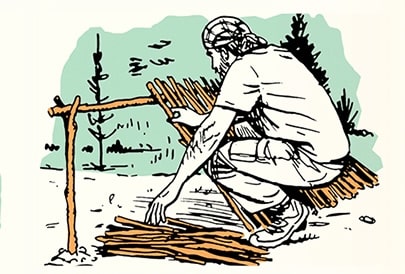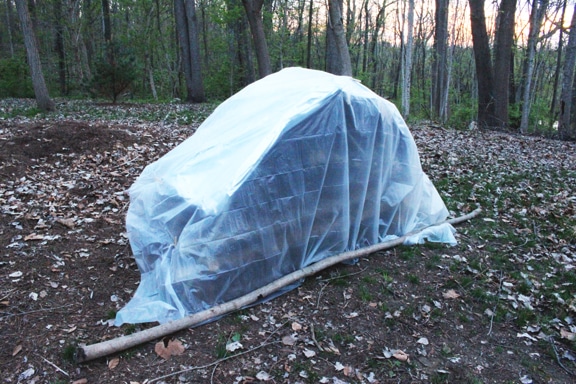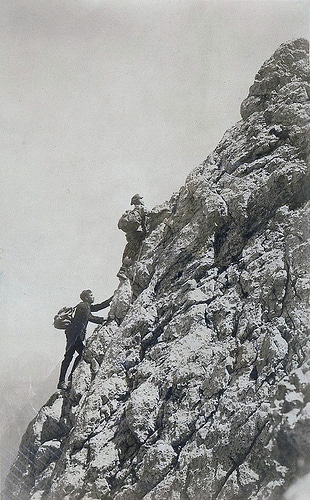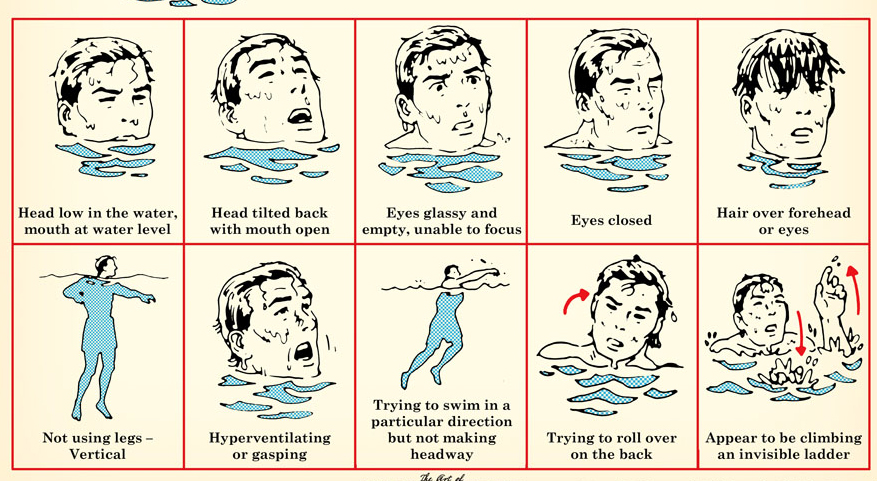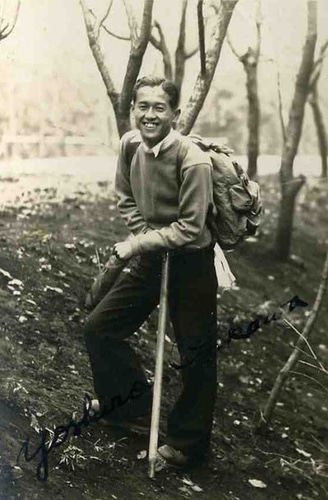
Every man has a different idea of what constitutes a “necessity” when venturing out into the wilderness. For one man, a fire source and a good blade may be all that is required, while for the next, GPS and a full outdoor kitchen setup might be considered indispensable. While experienced hikers, climbers, and other adventurous sorts most likely have their packing list down to a science, those who are just beginning to branch out into the wilderness can certainly benefit from a standard, universal checklist. Cue the Ten Essentials.
The Ten Essentials and the Ten Essentials (Systems Approach)
Originally published by The Mountaineers (a Seattle-based outdoor recreation group) in the 1930s, the Ten Essentials is a list of necessities that every hiker, climber, camper, and adventurer should have on hand while in the wilds. The list is by no means exhaustive and should therefore not be looked at as a packing checklist. For example, it does not mention such essentials as a proper sleeping bag and tent or a good set of boots. What the Ten Essentials provides is a list of items which you will likely find yourself in need of when the unexpected occurs. With these items in your pack, you will find yourself much more capable of responding well to all variety of desperate situations. First listed in The Mountaineers publication Mountaineering: Freedom of the Hills nearly seventy years ago, the original list is beginning to show signs of age, but is still quite applicable today.
- Map
- Compass
- Sunglasses and sunscreen
- Extra food and water
- Extra clothes
- Headlamp/flashlight
- First aid kit
- Fire starter
- Matches
- Knife
In a recently updated version of the list published in 2003, The Mountaineers have moved away from the specific articles listed in the original Ten Essentials, opting instead for a “systems” oriented list. In doing so, they have specified the ten essential systems which must be available in the event of an emergency, thus allowing the reader to decide which items within each system fit their potential needs the best. For example, the first system, Navigation, could be represented in a climber’s pack by a topographical map and compass, or by a full feature GPS unit and spare batteries.
- Navigation
- Sun Protection
- Insulation
- Illumination
- First Aid
- Fire
- Repair Kit/Tools
- Nutrition
- Hydration
- Emergency Shelter
Sure, you may not need some of these articles when just venturing out for an afternoon hike, but keep in mind that the unexpected can and does occur. Trail markers vanish, bad weather appears from nowhere, and all other forms of disaster conspire in an effort to keep you from getting home in time for dinner. Armed with the Ten Essentials, however, you’ll be more than equipped to deal with these situations and even prepared for an unplanned night or two in the wilds while you sort out the situation. It happens.
Let’s take a more in-depth look at these systems and examine what articles fit the bill for each:
Navigation: As mentioned above, the navigation system could include traditional forms of orienteering such as a good topographic map of the area you are in and a compass, or it could include a GPS unit. Just remember, should you choose to rely solely on GPS, you put yourself at risk of poor signal coverage, dead batteries, water damage, and other mishaps that could leave you without a navigational aid.
Sun Protection: Sun protection of some sort is a necessity no matter where you intend on hiking or what the weather conditions are like. SPF 30 sunscreen that blocks both UVA and UVB rays is the standard, although you can always go stronger if you think it is necessary. In addition to this, proper sun protective clothing (long sleeves, hat, etc) is a good idea, and of course you’ll want to pack some sunglasses.
Insulation: Most experts agree that you should pack or wear enough layers that in the event that you unexpectedly have to sleep outside you will be warm through the night. Remember, layers insulate much better than large outerwear does and are easier to shed individually as the temperature rises and drops.
Illumination: The standard for hikers and climbers alike has always been the headlamp. A good headlamp will provide you with adequate lighting while allowing you to keep both hands free. Modern LED headlamps can be quite bright and have long battery lives. In addition, a handheld high lumen flashlight can provide you with a much brighter light when things go bump in the night.
First Aid: A proper first aid kit is indispensable, and yet it is also the most often neglected. Your kit should be kept in a watertight container and should hold the following:
- Assorted adhesive bandages
- Roll bandages (gauze)
- Large triangular bandages
- Medical tape
- Painkillers
- Antiseptic
- Soap
- Needle and thread
- Scissors
- Blister care
- Safety pins
- At least a three day supply of any prescription medication you may be on
Fire: There are a lot of options when it comes to fire. Two of these, waterproof matches and a keychain fire striker, should be considered an indispensable part of any kit since they are light, small, and reliable. In addition to these, you can also consider tinder kits, emergency flares, windproof lighters, etc.
Repair Kit and Tools: First and foremost, your repair and tool kit should contain the most important outdoor tool, a good knife. Personal preference plays a large role here, but you should be sure to have something sturdy enough to chop firewood with, and yet not so large or heavy as to be unwieldy.
Nutrition and Hydration: These are the two most self-explanatory systems and really depend on where you will be and what you will be doing. If you are hiking in a local state park that only covers a couple square miles, you likely won’t find yourself in the kind of bind where you need to carry three days’ worth of food and water. If you’re planning on wandering about in Denali National Park for a bit, however, you better prepare for the worst and pack an extra couple days’ worth of food and water. As an alternative to packing loads of water, consider purchasing either chemical water treatments or a water filter if there will be water available in your environment.
Emergency Shelter: This is a tricky one, and again depends on location and season. At minimum, you want to have an emergency blanket, or “space blanket” with you. They take up virtually no space and will help you maintain your core temperature. Other considerations are a lightweight tarp either for ground cover or to use as a shelter from wet weather or sun, a collapsible tent, or solid knowledge of how to make a lean-to utilizing nature’s bounty.
Other Items to Consider
There are other considerations as well. For example, if you are in a tropical climate, you will undoubtedly want to bring insect repellent, or otherwise suffer the consequences. Signaling and communication devices, such as a cell phone, GPS locator, whistle, mirror, etc, could be extremely useful in a pinch. In bear country, you definitely don’t want to find yourself in the woods without a firearm or bear mace. These, along with other considerations, provide solid evidence that although the Ten Essentials are critical, there is one essential not listed that you absolutely cannot go without…Knowledge.
The Ultimate Essential
Without a sound knowledge of the environment you are entering and how to survive in it, you are only asking for trouble. Find out what the wildlife is like, how quickly weather patterns change, what type of environmental hazards are present (i.e. poison ivy, venomous snakes, hungry cannibals with a penchant for head shrinking) before you even begin to pack, and you will know what you do and don’t need. Just remember, the best way to be prepared is to expect the unexpected.
Sources:
Mountaineering: Freedom of the Hills by The Mountaineers Society
National Geographic’s Complete Survival Manual by Michael S. Sweeney


